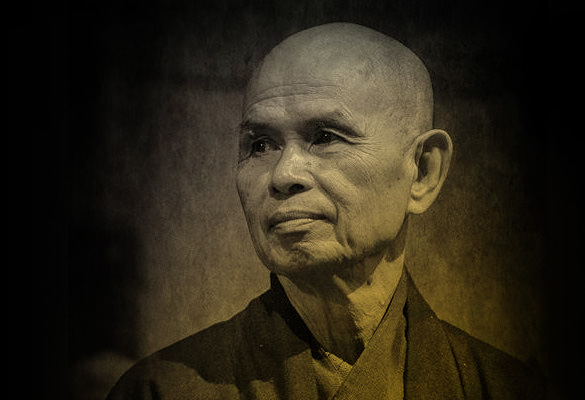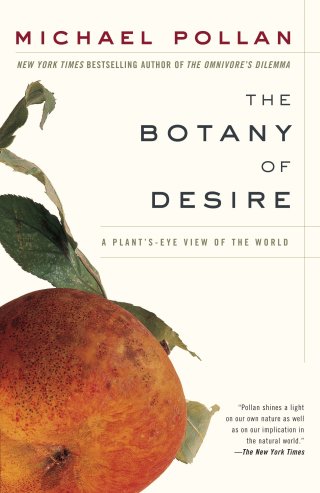When you make the effort to listen and hear the other side of the story, your understanding increases and your hurt diminishes.
The great Buddhist teacher and peace activist Thich Nhat Hanh offers a three-step remedy for this elemental human tendency in a portion of his slender, potent book Fear: Essential Wisdom for Getting Through the Storm (public library), which also gave us his warm wisdom on the four Buddhist mantras for turning fear into love.

Half a century after the great humanistic philosopher and psychologist Erich Fromm detailed the six rules of listening and unselfish understanding, Hanh offers a three-step process for correcting wrong perception in relationship conflict and emerging victorious with deeper love:

One fact I have learned about life through the empiricism of living: When we are hurt in a relationship, when we are spinning in the blooming buzzing confusion of sensemaking, the explanation we elect as correct usually has more to do with our own fears and vulnerabilities than it does with the reality of the situation; almost always, that explanation is wrong; almost always, the true explanation has more to do with the fears and vulnerabilities roiling in the other person invisibly to us.
There is a third thing we need to do, if we can. The third thing is very hard, perhaps the hardest. We need to listen very carefully to the other person’s response to truly understand and try to correct our perception. With this, we may find that we have been the victim of our wrong perceptions. Most likely the other person has also been a victim of wrong perceptions.

The explanatory contexts in which this tendency manifests today may be different, but it manifests just the same — especially in our interpersonal relationships, where so much of the correct frame of reference that is the other person’s inner reality is invisible to us. It helps to remember that between our feelings and anything in the external world that causes the ripples of consciousness we call feelings — any difficult situation, any painful event, any hurtful action of another — there lie myriad possible causal explanations.
One fact that never fails to astound me: Despite the immense cultural changes and leaps in knowledge over the epochs, the human brain — that crucible of consciousness, roiling with the psychologies that govern the behaviors we call human nature — has remained virtually unchanged for the past hundred thousand years. How humbling to consider that what is cognitively true of our ancestors — who, lacking a knowledge of astronomy as the correct frame of reference for planetary motion, explained eclipses as acts of god and comets as omens of ill fortune — is as true of us.
And so, sensemaking and storytelling creatures that we are, we move through the real world in a self-generated dream, responding not to reality but to the stories we tell ourselves about what is true — stories at best incomplete and at worst injuriously incorrect, stories about what we do and don’t deserve, stories the cost of which is connection, trust, love. This is why without charity of interpretation and without candor — the vulnerability of it, the courage of it, the kindness of it — all relationships become a ricochet of unspoken resentments based mostly on misapprehended motives, and crumble.
If we are sincere in wanting to learn the truth, and if we know how to use gentle speech and deep listening, we are much more likely to be able to hear others’ honest perceptions and feelings. In that process, we may discover that they too have wrong perceptions. After listening to them fully, we have an opportunity to help them correct their wrong perceptions. If we approach our hurts that way, we have the chance to turn our fear and anger into opportunities for deeper, more honest relationships.
The intention of deep listening and loving speech is to restore communication, because once communication is restored, everything is possible, including peace and reconciliation.
With an eye to the ultimate aim of this process, he adds:
Much of our suffering comes from wrong perceptions. To remove that hurt, we have to remove our wrong perception.
The second thing we can do, when we are ready, is to tell the people who we think have hurt us that we are suffering and that we know our suffering may have come from our own wrong perception. Instead of coming to the other person or people with an accusation, we can come to them for help and ask them to explain, to help us understand why they have said or done those things.

Drawing on two powerful Buddhist practices that effect this release — deep listening and loving speech — Hanh writes:
[…]
We are all capable of recognizing that we’re not the only ones who suffer when there is a hard situation. The other person in that situation suffers as well, and we are partly responsible for his or her suffering. When we realize this, we can look at the other person with the eyes of compassion and let understanding bloom. With the arrival of understanding, the situation changes and communication is possible.

This, he observes, applies to romantic relationships, to politics, to family and workplace dynamics — in other words, to all possible configurations of one consciousness embarking on the touching, terrifying endeavor of being known and understood by another.
He writes:
Part of why this is so challenging to the Western mind, with its individualistic ideal of self-reliance that too readily metastasizes into self-righteousness, is that we grow incredibly insecure at the prospect of being wrong and feel incredibly unmoored by the fact of having been wrong. In a culture conflating who we are with what we know and what we stand for, the Eastern contemplative traditions can be so salutary with their gentle, steady practice of releasing the clutch of selfing and unclenching the fist of righteousness into an open palm of receptivity.
The first thing we can do in these situations is to acknowledge internally that the pictures we have in our head, what we think happened, may not be accurate. Our practice is to breathe and walk until we are more calm and relaxed.
Whenever we see another person take an action, he notes, we must remain aware that there could be a number of invisible motive forces behind it and we must be willing to listen in order to better understand them — not only out of the vain self-referential transactionalism masquerading as the Golden Rule, in the hope that others would be just as willing not to misunderstand our own motives by their perception and interpretation of our actions, but because correcting our wrong perceptions is a basic and vital form of caring for ourselves:
Any real peace process has to begin with ourselves… We have to practice peace to help the other side make peace.
Shortly after he wrote Fear: Essential Wisdom for Getting Through the Storm, Hanh placed this insight at the center of his now-classic teachings about how to love — an insight that also animates Alain de Botton’s soulful wisdom on what makes a good communicator. Perhaps Walt Whitman, writing with ecstatic immediacy, best captured this in his intimation that the secret of Being is “to do nothing but listen,” so that the song of life — which is the song of love — may be heard.





